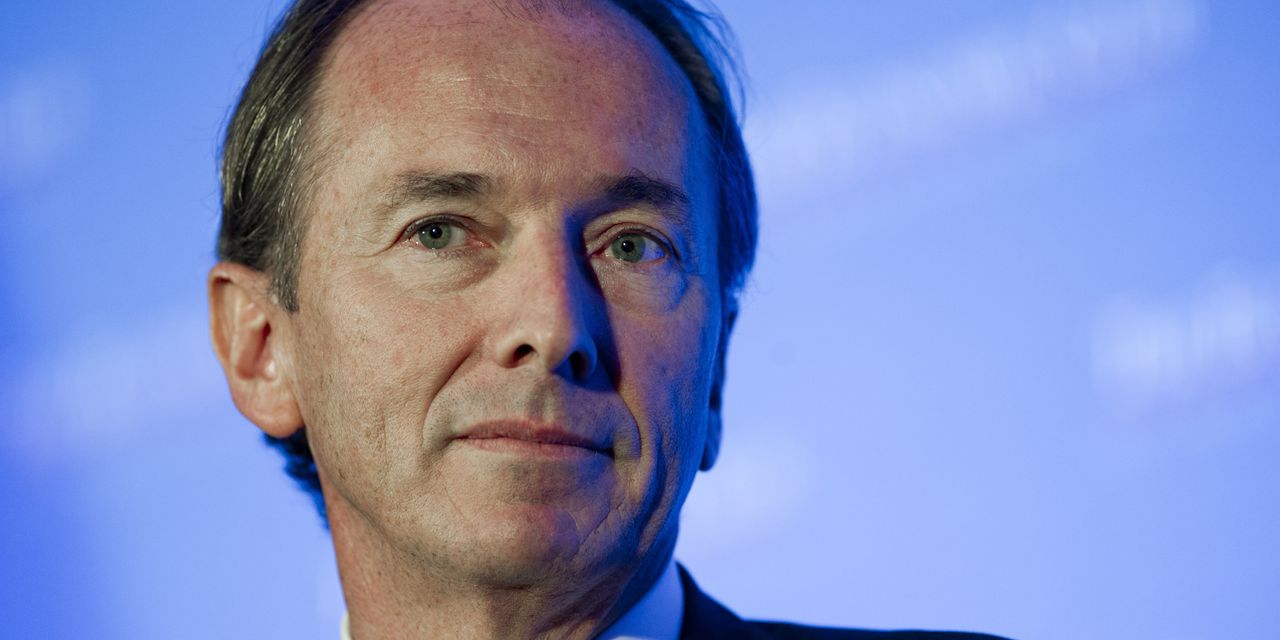Morgan Stanley’s
chief executive officer, James Gorman, will step down from his role in the next 12 months—setting up a key succession at one of Wall Street’s biggest companies.
In his decade-plus reign, Gorman transformed
Morgan Stanley
into a wealth management powerhouse through key acquisitions such as E*Trade Financial in 2020. Morgan Stanley’s wealth unit had $4.5 trillion in client assets as of March 31. Whoever takes over the job will be managing a different, and much bigger empire than the one Gorman inherited more than a decade ago.
The bank’s board has “identified three very strong senior internal candidates for consideration as the next CEO,” Gorman said at the company’s annual meeting Friday.
“The specific timing of the CEO transition has not been determined, but it is the board’s and my expectation that it will occur at some point in the next 12 months,” Gorman said. “That is the current expectation in the absence of a major change in the external environment.” He added that when he does step down as CEO, he will assume the role of executive chairman.
The move was unexpected. Gorman had previously signaled he would stay on a bit longer as CEO . Glenn Schorr, an analyst at Evercore ISI, says he figured that Gorman would remain CEO for two to three years more. Morgan Stanley told Barron’s Friday it wouldn’t be providing any further comments outside of Gorman’s remarks.
At $84 a share, the stock was down about 2% in midday trading on Friday. “This is one of the most cohesive management teams in financial services,” says Schorr. “I wouldn’t expect much disruption at all.” While companies invariably portray their management as cohesive, Schorr says it’s actually true at Morgan Stanley.
Potential successors to Gorman include co-presidents Ted Pick and Andy Saperstein as well as investment management head Dan Simkowitz, who is also the firm’s co-head of corporate strategy. Pick leads the company’s institutional securities group (ISG) while Saperstein oversees Morgan Stanley’s wealth management unit.
Wells Fargo analyst Mike Mayo sees Saperstein as “the leading candidate” given the wealth unit’s importance to Morgan Stanley. Mayo, writing in a May 19 research note, says it’s most likely a choice between Saperstein and Pick.
“Investment management is relatively smaller and the acquisition of Eaton Vance has fallen short, leaving the battle between the heads of Wealth and ISG, in our view,” Mayo writes. “To a degree, the decision at MS today mirrors the one taken by MS when it named James Gorman as CEO over a decade ago—he was a WM head who had to reassure the ISG ranks.”
Gorman told Barron’s earlier this year that he wanted “to make sure that it’s equipped to meet the challenges of the next decade.” However, he also said that it’s “healthy” for a company to refresh its management ranks, and pointed to several young leaders at Morgan Stanley. Some of the younger top executives include CFO Sharon Yeshaya, head of human resources Mandell Crawley, and wealth management COO Jed Finn.
“How do you ensure you have the right people for whatever the next decade or two will throw at us? That’s really what I’m focused on,” Gorman said.
Of course, ensuring a smooth CEO succession is a tricky, but critical balancing act for any company that can create uncertainty in the near term.
“A management transition often creates short-term stock weakness, and we feel that may be the case this time given the importance of Gorman’s role in reshaping the firm over the past decade,” Mayo writes. “However, his willingness to stay on as executive chairman should dampen negativity.”
Still, there are risks. When successions go awry, it can spoil a company’s corporate culture, says Odeon Capital analyst Dick Bove. Gorman’s departure is a “significant negative” in Bove’s view. “Battlelines are now likely being drawn between the other contenders and their supporters. Only one can win and there will be many losers,” he says.
A transformed company. Australian-born Gorman, 64, joined Morgan Stanley in February 2006, having previously worked at rival Merrill Lynch and consulting firm McKinsey & Co. Gorman subsequently rose through the ranks at Morgan Stanley, becoming CEO in 2010 and chairman in 2012.
Before the financial crisis, investment banking was dominant at Morgan Stanley. But in the years since then, the firm has pivoted to emphasize wealth management. Morgan Stanley’s acquisition of Smith Barney in 2008 added thousands of financial advisors to its ranks, but it took several years to integrate the two businesses. Gorman didn’t ink another major deal for years.
Then in 2019, Morgan Stanley bought Solium Capital, a stock plan administrator, which Gorman subsequently followed with his purchase of E*Trade the following year.
Those deals broadened Morgan Stanley’s wealth management offering, giving it a large online brokerage as well as a large robo-advisor. The company has also been trying to expand its workplace business, seeing it as a potential pipeline of future wealth management clients.
The wealth business has also become a money generating machine. Morgan Stanley brought in $300 billion in net new assets, eclipsing many of its rivals in wealth management. The wealth unit has also come to play a bigger role within Morgan Stanley. In 2010, wealth and investment management contributed 26% of Morgan Stanley’s pretax profits. Last year, it contributed 52%.
—Additional reporting by Carleton English and Andrew Bary
Write to Andrew Welsch at [email protected] and Angela Palumbo at [email protected]
Read the full article here


